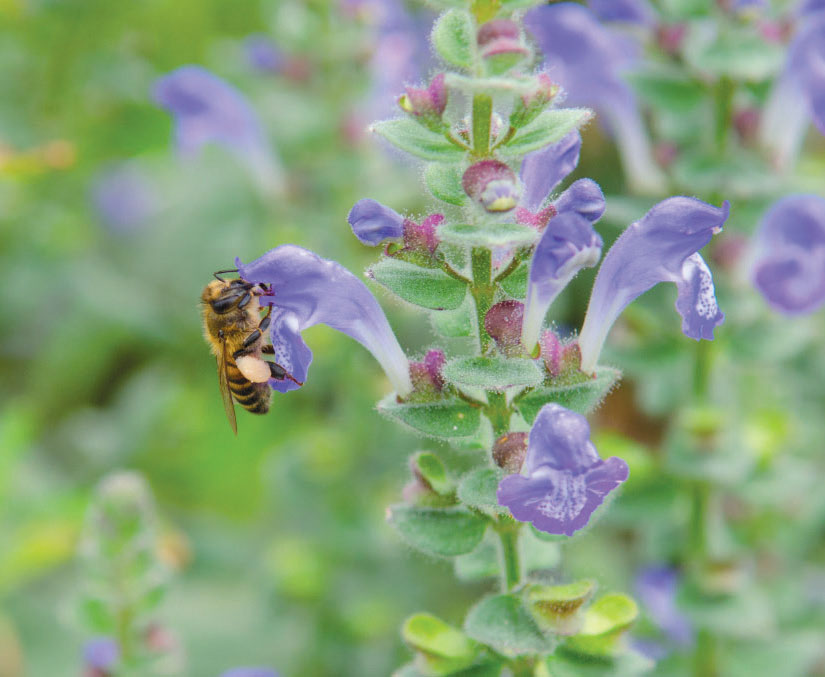Make Your Yard a B&B for Bees
Typical suburban yards are no havens for bees. They don’t offer much for bees to eat and insecticides may have been used to combat mosquitoes. Yet humans’ survival depends on bees’ service as pollinators. Without pollinators, there would be no food.
The good news? Attracting bees isn’t complicated. The solution hinges on removing some part of the lawn and adding the kinds of plants bees love. You may also want to add some plants that are a natural repellent to the mites that are prone to accelerate honeybee colony collapse. Many plants in the mint family fall in both categories, so they’re a natural place to start.
Nearly any type of Texas native Salvias or their welladapted cousins from Mexico and South America are bee magnets, and they are the ultimate in low-maintenance beauty besides. Bonus point? All are part of the mint family.
Salvia greggii, in cherry red, white or pink, is a popular perennial frequented by both bees and hummingbirds. Salvia guaranitica, with deep blue spiraling flowers, sprawls and spreads with gorgeous abandon, and the bumblebees and other bees in my garden can’t seem to get enough of it. Ditto for Mealy Blue Sage, another salvia that takes up a bit less space in the garden.
Bee balm is a quickly spreading mint-family plant with shaggy flower heads in purple, red and pink. As its name implies, bees love bee balm, but to flourish in Houston it has to be planted in very well-draining, sunny spots.
Some other favorite bee magnets for Houston are viburnum, a flowering shrub; herbs such as borage, rosemary and flowering basils; Texas redbud and witch hazel trees; milkweed, sunflowers, and many fruit trees. Of course, always avoid using chemicals such as pesticides that are harmful to bees.




